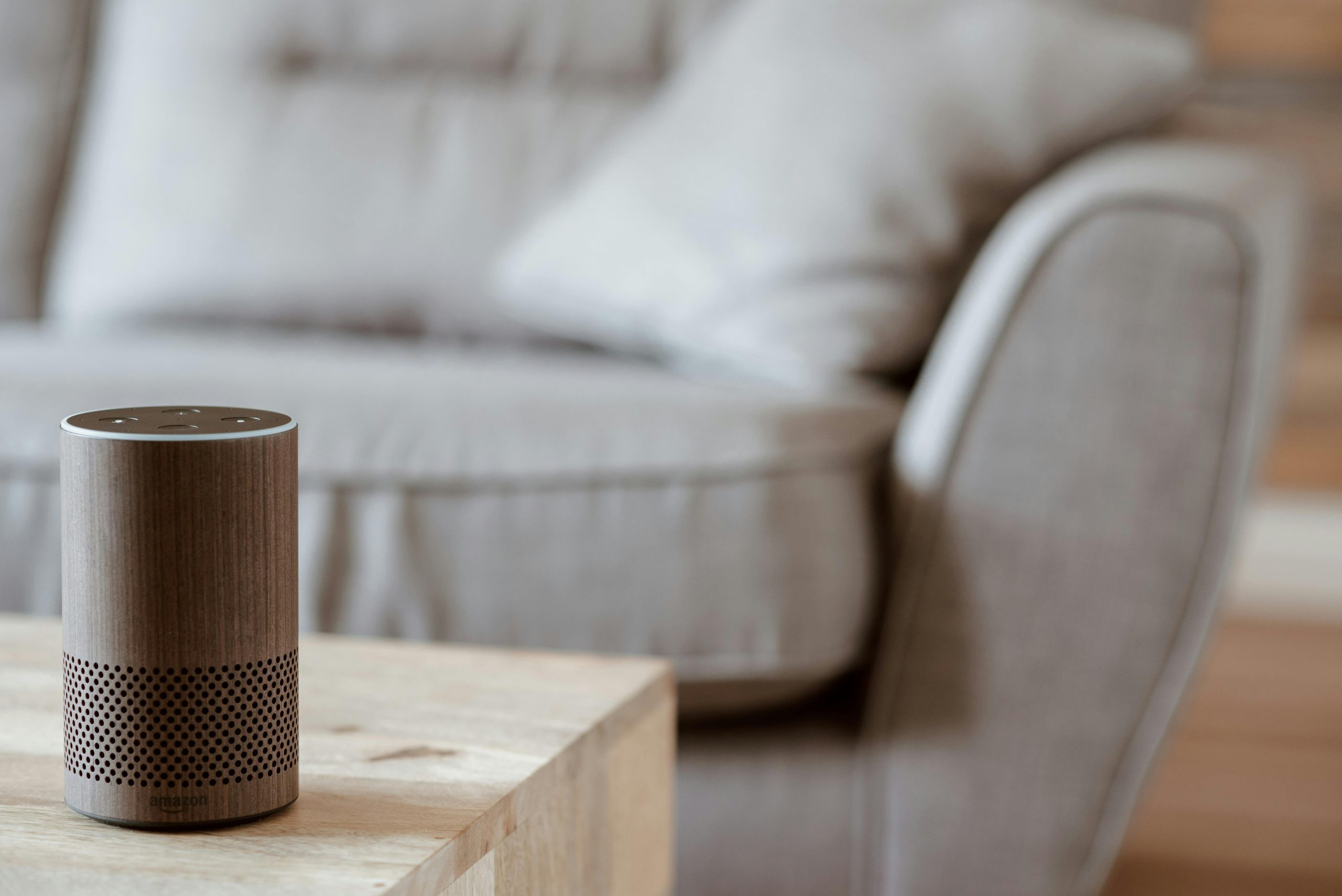
Alexa Plus and the Omnisense Platform: Contextual Intelligence
The revolution in sound quality is almost secondary to the revolution happening under the hood. The hardware changes—the smaller enclosure, the new chips—are merely enabling platforms for the true product launch: the upgraded assistant and its sensory network. The pairing of the newly branded Alexa Plus assistant with the proprietary Omnisense sensor platform signals Amazon’s most aggressive push yet to make its devices truly proactive rather than purely reactive.
The Functionality of Sensor Fusion for Environmental Awareness
The Omnisense platform is the technological bedrock enabling the “smarter” interactions we’ve been promised. It achieves this through sensor fusion, a complex process where disparate data streams are blended and analyzed simultaneously to build a comprehensive, real-time understanding of the environment. This is not just a single microphone listening for a wake word; it’s a layered awareness system.
The data inputs feeding the fusion engine include:
This combined perception goes far beyond merely hearing a verbal prompt. It involves perceiving presence, tracking general motion patterns, and understanding ambient conditions in the room. This capability is what Amazon hopes will separate the 2025 generation from prior models, as intelligence is no longer solely reliant on a verbal cue to trigger an action. This level of awareness pushes the boundaries of advanced smart speaker technology, attempting to make the technology fade into the background of daily life.
Proactive Automation and Anticipatory Smart Home Routines
The practical payoff for the massive investment in Omnisense and the enhanced silicon is contextual automation and proactive assistance. Where previous Alexa required you to explicitly ask, the new system aims to anticipate need based on detected context.
Consider these practical examples, moving beyond simple commands:
This shift from a rigid “command-and-response” interface to anticipatory action is the heart of the Alexa Plus promise. The local processing power provided by the on-device AZ3/AZ3 Pro chips is essential here; it ensures these proactive suggestions and automations are timely and relevant, rather than being delayed by a round trip to the cloud. For users concerned about data handling, the promise of *on-device* processing for these initial awareness checks is a key mitigation factor for privacy concerns.
Commercial Strategy and Market Positioning for the New Lineup
The launch of the new Studio and Dot Max is not just a technical exercise; it’s underpinned by a sharp, tiered commercial strategy. Amazon is clearly aiming to maximize adoption across distinct consumer segments while simultaneously driving subscription uptake for its premium assistant service.
Pricing Tiers and Initial Value Proposition Analysis
The pricing structure is carefully designed to create a clear performance ladder, offering a compelling value proposition at both the mid-range and the premium end of the spectrum:
The aesthetic choices also play a role in this strategy. Both are available in neutral tones like Graphite and Glacier White, but the Dot Max features an exclusive Amethyst option, allowing consumers to choose a device that better integrates with their existing décor. This attention to visual integration is key for a device meant to be ‘always on’ in the main living area.
The Early Access Incentive for Amazon Prime Subscribers
The immediate sales acceleration hinges on leveraging Amazon’s existing, highly engaged customer base. A central component of the launch strategy is the immediate enrollment of **Amazon Prime consumers in the United States** into the new AI tier: they are being offered Alexa+ Early Access out of the box for free with the purchase of any new Echo device.
This is a brilliant, dual-purpose tactic:
This creates an immediate, tangible benefit for existing subscribers while simultaneously incentivizing newer users to subscribe to Prime to gain the same initial advantage, directly tying hardware sales to their recurring revenue goals. You can read more about the details surrounding contextual smart home automation that this early access enables.
Broader Ecosystem Implications and Future Trajectory
The release of the Dot Max and Studio is not merely an incremental hardware update; it signals the vanguard of a comprehensive overhaul of Amazon’s entire connected device family. This suggests a unified, long-term vision for the smart home, one where the assistant is the central, conscious element.. Find out more about Alexa Plus Omnisense sensor fusion environmental awareness strategies.
The Role of New Echo Devices in the Wider Alexa+ Rollout
The new speakers are the essential hardware catalysts for the widespread deployment of Alexa Plus. The assistant’s design philosophy represents a move beyond simple, transactional voice commands. It is engineered to engage in more natural, multi-turn conversations, capable of summarizing complex information, creating multi-step plans, and handling nuanced follow-up questions based on previously established context.
By anchoring this high-level AI experience to devices featuring advanced silicon like the AZ3 Pro chip, Amazon ensures that the first impression of Alexa Plus is one of immediate, noticeable improvement in conversational fluidity and intelligence. This establishes a high standard for the assistant’s future iterations across all supported hardware, whether it’s a new Echo, a smart display, or perhaps even third-party devices integrating the platform.
Comparative Analysis Against Emerging Competitor Offerings
The introduction of on-device AI acceleration (running complex LLMs locally via the AZ3 Pro) and advanced sensor fusion places this new Echo lineup in direct, and arguably elevated, competition with rivals. Competitors are now forced to react quickly.
Specifically, the architecture of these new devices pressures rivals in two key areas:
It’s worth noting that Amazon’s strategy appears to be moving beyond just being an “assistant” to being an “agent”—an entity capable of initiating complex actions autonomously, a capability that rivals are still perfecting in the cloud. This on-device processing capability is a major differentiator today.
Consumer Considerations and Critical Perspectives
While the technical specifications paint an impressive picture of future-forward innovation, the market must contend with the realities of real-world usage and the potential drawbacks associated with such advanced technology integration. No massive leap forward comes without friction.
Early User Experience with Conversational AI Capabilities
The true litmus test for the hardware’s promise lies in the daily interaction with Alexa Plus. Early adopters, especially those who have spent years learning the rigid syntax of the original Alexa, are intensely focused on a few key questions:
Early anecdotal feedback, even on the initial availability waves, heavily weights toward these AI interactions. While sound quality advancements are always welcome, they have become a more mature technological field. The current frontier in user interface evolution is conversational intelligence. Reports from the early access program suggest the conversations flow more naturally, with the ability to interrupt or change course mid-sentence, making the interaction feel significantly less like talking to a machine. However, some users still report that while it can tackle complex requests, the system can be “incompetent enough to be annoying,” lacking perfect memory or consistent task completion. This highlights the tension between the *promise* of a generative AI assistant and the *reality* of a complex beta product still undergoing refinement.
Tip for Early Adopters: Since you have early access, be vocal! Utilize the built-in feedback mechanism to report instances where context is lost or where the conversation feels stilted. Your input, facilitated by the powerful AZ3 Pro chip, directly trains the next generation of the assistant.
Data Privacy Concerns in an Increasingly Aware Smart Device Landscape
As the devices become more perceptive—utilizing radar, motion, and ambient signals via Omnisense—concerns regarding data collection and privacy inevitably intensify. The very features that enable proactive automation—the continuous, low-level monitoring of the environment—are also the features that raise user scrutiny about data handling.
While Amazon emphasizes that the AZ3/AZ3 Pro chips allow for significant on-device processing, which mitigates the need to stream all raw sensor data to the cloud, the fact remains that these devices are intentionally designed to “sense everything” that happens in a space to infer context. This leads critical observers to voice skepticism that the manufacturer’s interests will always align perfectly with the user’s desire for absolute digital sanctuary within their homes.
For instance, while using Wi-Fi CSI to detect if a door is open is less intrusive than a camera, it is still a form of digital observation. Consumers must weigh the convenience of an assistant that truly understands their environment against the desire for absolute opacity. While Amazon touts the integration with services like Oura for health data, every new data stream gathered by Omnisense adds to the overall digital profile, necessitating that users remain vigilant regarding the smart home privacy protocols and settings they select. A significant percentage of users already express deep trust issues with AI integration in their home devices, a hurdle Amazon must continuously address.
Conclusion: The Studio’s Place in the AI-Driven Home
The 2025 Echo Studio is a fascinating piece of hardware, less about raw sonic dominance than its predecessor and more about becoming an acoustically excellent, visually discreet node within a much larger, smarter network. It successfully shrinks the footprint by forty percent, allowing it to blend in, while still delivering compelling Dolby Atmos and Spatial Audio thanks to superior digital tuning managed by the AZ3 Pro chip.. Find out more about Setting up Alexa Home Theater multi-speaker surround sound insights information.
However, the real story here isn’t the speaker itself, but the ecosystem it represents. The combination of the more capable Alexa Plus assistant, anchored by the environmental awareness of the Omnisense sensor platform, signals a clear direction: the smart home is transitioning from a collection of isolated gadgets responding to commands to a unified, ambient system that attempts to understand and anticipate your needs. The pricing strategy is aggressive, especially with the contextual smart home automation hook provided to Prime members.
Key Takeaways and Final Actionable Insights
The new Echo Studio is Amazon’s boldest pitch yet for the high-fidelity, intelligent home. It’s a compact powerhouse that prioritizes intelligence and integration over sheer brute force. The future of the smart home is here, and it’s not just listening—it’s sensing.
What’s your take on the size reduction? Are you ready to live in a home that proactively anticipates your needs, or does the enhanced sensing raise more privacy red flags than it solves scheduling headaches? Let us know in the comments below!










